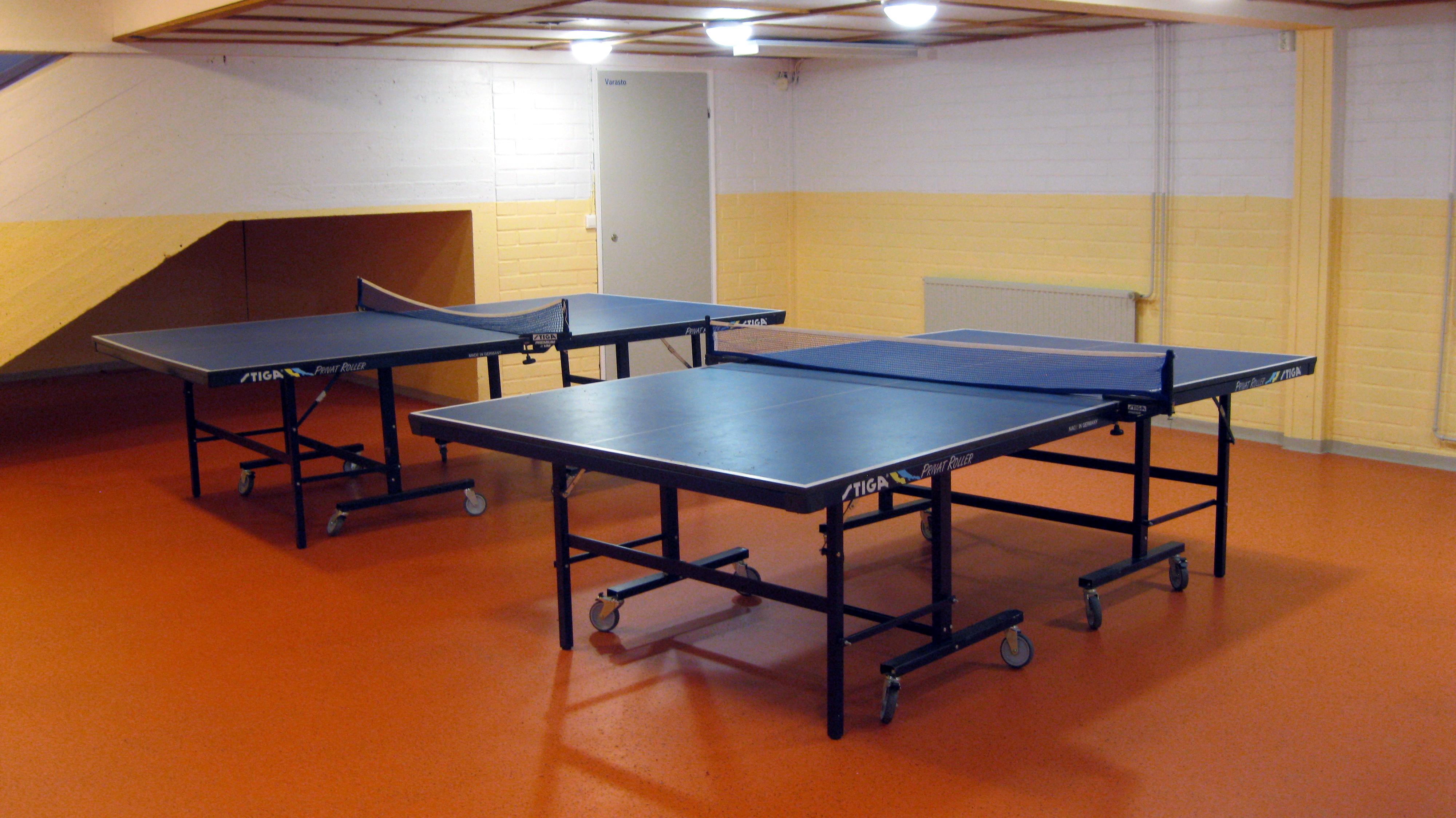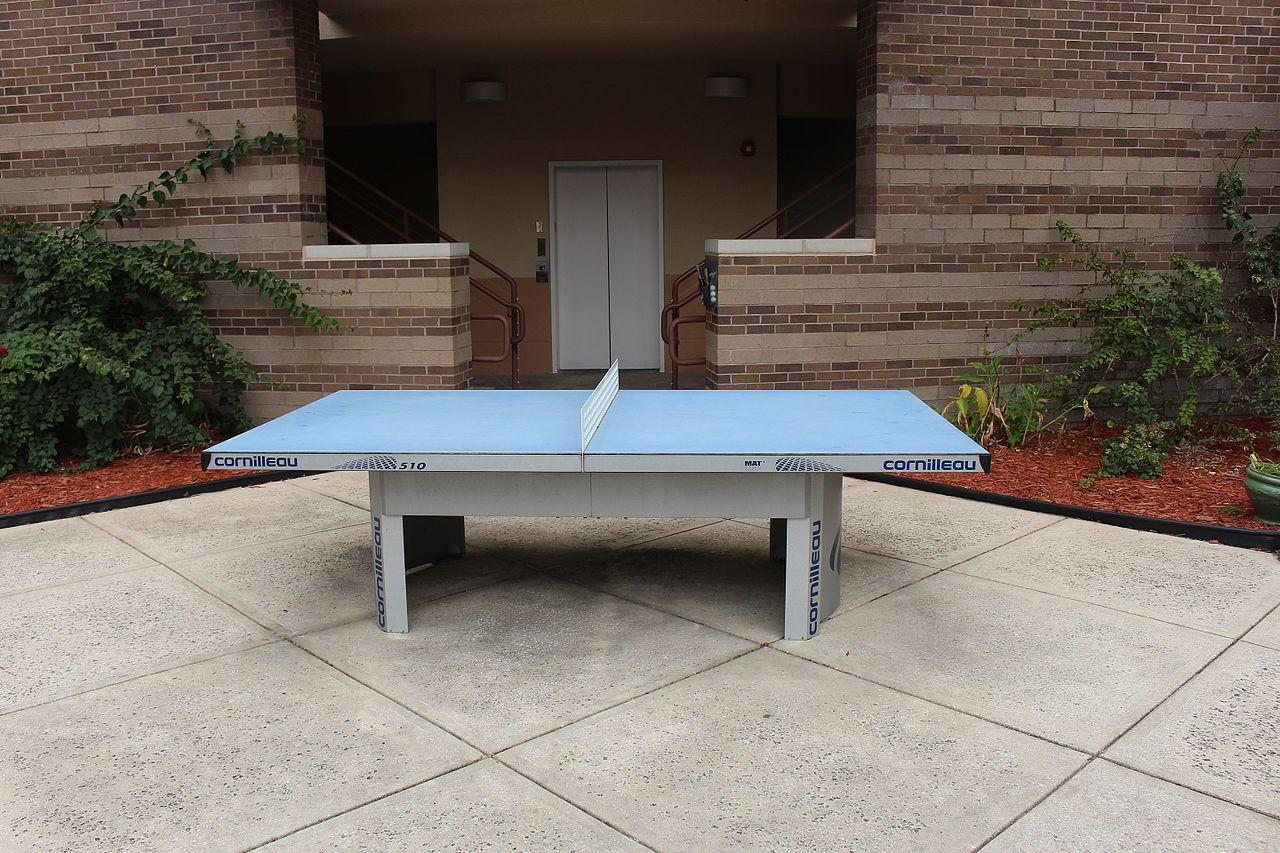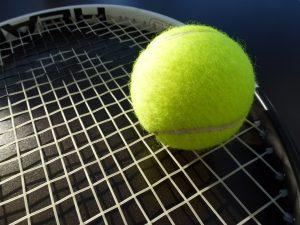We may earn money or products from the companies mentioned in this post.
Introduction to Table Tennis Tables

Table tennis, also known as ping pong, is a fast-paced and exhilarating sport that has gained immense popularity worldwide It originated in the late 19th century and has since evolved into a highly competitive game played by millions of people The sport’s rapid growth led to its inclusion in international competitions, making it a staple in the world of professional sports
Brief history of table tennis as a sport
The origins of table tennis can be traced back to England in the 1880s when it was initially played as an after-dinner parlor game At that time, players would use books or cigar box lids as paddles and rows of books served as makeshift nets This rudimentary version soon caught on and underwent several developments to become the modern-day table tennis we know today
With increasing popularity, table tennis started gaining recognition on a global scale In 1926, the International Table Tennis Federation (ITTF) was formed to regulate the sport and organize international tournaments Since then, table tennis has become an Olympic sport, with athletes from around the world showcasing their skills at this prestigious event
Importance of the table in the game
The table is not just a mere playing surface; it plays a crucial role in determining gameplay and performance in table tennis The dimensions of the table are standardized by ITTF, ensuring fairness and consistency across all levels of play
The size and height of the table allow for strategic placement of shots while challenging players’ agility and reflexes The smoothness and levelness of the playing surface significantly impact ball bounce and spin generation, affecting shot accuracy and control
Furthermore, the net dividing the two halves of the table requires precision when executing shots over it Players must adapt their techniques and strategies to accommodate the net height, adding an additional layer of challenge to the game
In conclusion, table tennis tables are not just pieces of furniture; they form the foundation of this exciting sport The history and evolution of table tennis as a sport have paved the way for its global recognition and inclusion in major competitions The importance of the table in gameplay cannot be overstated, with its dimensions and surface quality influencing shot placement, ball spin, and overall performance on the playing field
Common Materials Used in the Construction of Table Tennis Tables

When it comes to table tennis, the construction of the table itself plays a crucial role in gameplay and overall quality Various materials are used, each with its own unique characteristics and advantages Let’s dive into the common materials used in the construction of table tennis tables
Wood-Based Materials
Wood has long been a popular choice for constructing table tennis tables due to its natural properties that enhance gameplay Two common wood-based materials used are particleboard or chipboard tables and medium-density fiberboard (MDF) tables
1 Particleboard or Chipboard Tables
Particleboard, also known as chipboard, is an affordable option commonly used in entry-level table tennis tables It is made by compressing wood particles together using adhesive resins While particleboard tables may not offer the same level of durability as other materials, they do have their advantages
Pros:
- Cost-effective option for recreational players or beginners
- Lightweight and easy to move around
Cons:
- Lacks durability compared to other materials
- Susceptible to warping over time if exposed to moisture or humidity
The thickness of particleboard tables can also impact gameplay Thicker tables tend to provide better bounce and stability during intense rallies, while thinner ones may lack rigidity
2 Medium-Density Fiberboard (MDF) Tables
MDF is another wood-based material commonly used in table tennis table construction It is made by compressing fine wood fibers with adhesive resins, resulting in a smooth and uniform surface MDF tables offer several advantages over particleboard tables
Advantages:
- Improved durability compared to particleboard
- Consistent and even bounce across the entire playing surface
- Less prone to warping or damage from moisture
The thickness and density of MDF tables can greatly affect their quality Thicker tables provide better stability and bounce, while higher density ensures increased strength and longevity
Aluminum Composite Materials
In recent years, aluminum composite materials have gained popularity in table tennis table construction These materials combine layers of aluminum with other composite materials to create a sturdy and durable playing surface
1 Characteristics of Aluminum Composite Table Tennis Tables
Durability and Weather Resistance:
Aluminum composite table tennis tables are known for their exceptional durability They can withstand heavy use without showing signs of wear or damage Additionally, these tables are resistant to weather conditions, making them suitable for both indoor and outdoor use
Usage in Indoor/Outdoor Settings:
One of the key advantages of aluminum composite tables is their versatility They can be used in various environments, from indoor gyms to outdoor recreational areas This flexibility allows players to enjoy the game regardless of the location
Specialty Table Tennis Tables: Unique Materials and Designs

Concrete Table Tennis Tables
When it comes to table tennis tables, concrete may not be the first material that comes to mind However, concrete tables offer a range of advantages, particularly for public spaces such as parks and schools These sturdy tables can withstand the elements and heavy use, making them ideal for outdoor environments
In addition to their durability, concrete tables provide an excellent playing experience The solid surface ensures consistent ball bounce and reduces the risk of warping or damage over time Whether you’re a beginner or a seasoned player, you can expect a reliable playing surface with a concrete table tennis table
Glass Table Tennis Tables
If you’re looking to add a touch of elegance and style to your home or office, a glass table tennis table might be just what you need With their sleek design and transparent playing surface, these tables are perfect for luxury settings
While glass may seem fragile compared to other materials, rest assured that glass table tennis tables are designed with strength in mind They feature tempered glass that is resistant to shattering and can withstand intense gameplay Just like any other type of table, proper care should be taken to avoid scratches on the surface
One thing to consider when choosing a glass table tennis table is its playing surface While glass provides a smooth playing experience with consistent ball bounce, some players may find it slightly different from traditional surfaces such as wood or concrete It’s important to try out different surfaces before making your final decision
Choosing the right table tennis table material for your needs

When it comes to selecting a table tennis table, the material plays a crucial role in determining its performance and durability There are several factors to consider that will help you make an informed decision based on your specific requirements
Factors to consider when selecting a material:
-
Purpose: Indoor vs outdoor usage
-
Budget constraints
-
Space requirements
-
Level of play: recreational vs professional
If you plan to play table tennis indoors, you can opt for tables made of materials like wood or fiberboard These materials provide excellent ball bounce and control On the other hand, if you prefer playing outdoors, tables with weather-resistant surfaces like aluminum or synthetic laminate are ideal choices as they can withstand harsh weather conditions
Your budget will also influence your choice of table tennis table material While high-quality wood tables offer superior playing experience, they tend to be more expensive If you have budget constraints, considering options like medium-density fiberboard (MDF) tables can be a cost-effective alternative without compromising on performance
The available space in your home or recreational area is another crucial factor to consider If space is limited, folding tables with compact designs are suitable options as they can be easily stored away when not in use Additionally, some tables come with adjustable legs that allow for different heights and can accommodate uneven surfaces
Your skill level and intended use of the table will impact the choice of material as well For casual players or beginners looking for fun recreational games, affordable options made from MDF or particleboard can suffice However, if you are a serious player or planning to host professional tournaments, investing in high-quality wood tables with excellent ball response and consistent bounce is essential
Additional features that may impact decision-making:
-
Frame quality
-
Net assembly type
-
Wheels & portability
The frame of the table determines its stability and durability Look for tables with sturdy frames made from materials like steel or aluminum, as they provide better support and minimize vibrations during intense gameplay
The net assembly is another important consideration Some tables come with built-in fixed nets, while others have detachable nets that can be adjusted for tension Choose a net assembly type that suits your preferences and ensures proper functionality during matches
If you need to move the table frequently or store it away after use, consider options with wheels for easy transportation Tables with locking mechanisms on the wheels provide added stability during gameplay
Maintenance tips for different types of surfaces:
-
Protecting and prolonging the life of your table tennis table
-
Proper cleaning techniques for different materials
To ensure longevity, it’s important to protect your table from excessive moisture, direct sunlight, and extreme temperatures Use covers when not in use and avoid placing heavy objects on top of the table to prevent warping
The cleaning methods vary depending on the material of your table tennis surface For wood tables, use a damp cloth and mild detergent to wipe away dirt and sweat For synthetic laminate or aluminum tables, simply wipe with a clean cloth Avoid using abrasive cleaners that may damage the surface
By considering these factors and taking proper care of your table tennis table, you can ensure an enjoyable playing experience and maximize its lifespan
Useful Links

18 Different Types of Ping-Pong Tables
Ping Pong / Table Tennis Buying Guide
Weather-resistant, Outdoor Ping Pong Tables – STIGA US
Tips on buying an outdoor table tennis table
The 9 Very Best Table-Tennis Tables
Table Tennis and Foosball Tables Archives
Butterfly Professional Indoor Table Tennis Tables are the …
Outdoor tables tennis table | Outdoor ping-pong …
The 5 Best Ping Pong Tables (2023 Review)
Guide to Buying a Ping-Pong Table (2023 Guide)
Ping Pong Tables: Everything You Need To Know
The 13 Best Ping Pong Tables for Your House
How to Choose the Right Table Tennis Table for Your Home
Modern Table Tennis Tables | Free Shipping Over $99
Ping Pong Tables | Table Tennis Tables | Cornilleau
The 15 Best Ping Pong Tables for 2023 | PingPongRuler






